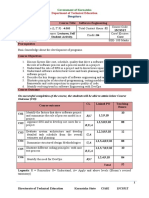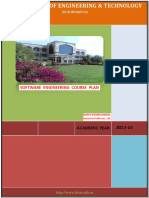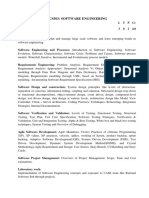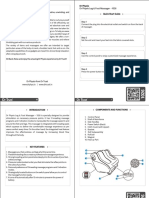0% found this document useful (0 votes)
10 views7 pages501343-3 Software Engineering
The document outlines the course details for Software Engineering (Course Code: 501343-3) at Taif University, including course objectives, learning outcomes, content, and assessment methods. It specifies the course's focus on software processes, project management, and design principles, with a blend of lectures, assignments, and projects for evaluation. Additionally, it highlights the importance of student academic counseling and the resources required for effective learning.
Uploaded by
Selim HemissiCopyright
© © All Rights Reserved
We take content rights seriously. If you suspect this is your content, claim it here.
Available Formats
Download as PDF, TXT or read online on Scribd
0% found this document useful (0 votes)
10 views7 pages501343-3 Software Engineering
The document outlines the course details for Software Engineering (Course Code: 501343-3) at Taif University, including course objectives, learning outcomes, content, and assessment methods. It specifies the course's focus on software processes, project management, and design principles, with a blend of lectures, assignments, and projects for evaluation. Additionally, it highlights the importance of student academic counseling and the resources required for effective learning.
Uploaded by
Selim HemissiCopyright
© © All Rights Reserved
We take content rights seriously. If you suspect this is your content, claim it here.
Available Formats
Download as PDF, TXT or read online on Scribd
/ 7





















































































